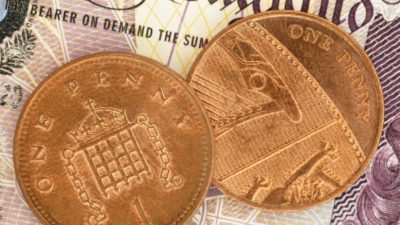Putting spare capital to work now can be a useful way to generate passive income for next year and years into the future.
Let’s say I had £20,000 to invest today and wanted to invest it in blue chip shares. With passive income as my main objective, here’s what I’d do.
Diversification reduces risk
With £20,000, I’d have enough to diversify as a way of reducing risk. Relying too heavily on any one share, no matter how attractive the yield, can be a costly mistake if it stumbles in future.
I’d look to diversify into at least five companies but to spread my risks more I’d go for ten. I’d also look to diversify across sectors. That way I would not be overly exposed to a sectoral downturn I didn’t see coming. I’d split my money equally between five sectors.
Choosing the sectors
Rather than picking individual shares first, I’d start with the sectors I want to invest in.
That’s because I’d like to begin with a view on whether a sector looks agreeably valued. I would also consider its future passive income-producing prospects.
If a sector does well overall, it should help to lift individual names, even if I don’t pick the best performers. Similarly, if a sector goes into freefall, having the best stock in it still might not insulate me from a downturn.
Looking at the market today, I’d choose the following five sectors:
- Pharma – pharma is here to stay and I expect it to grow. It’s not the highest-yielding sector, though, and patent expiration can dent firms’ future returns.
- Financial services – similarly, it’s here to stay and profit levels can be attractive. As the pandemic showed, though, a financial downturn can lead to dividend suspension.
- Consumer goods – I see demand increasing over time. Margins here can be tight, or affected by shifts in consumer tastes.
- Energy – this is another sector where growth may be slow, but demand will likely be fairly reliable. But returns can be regulated, limiting future income upside.
- Tobacco – I am overweight in tobacco currently, which is a risk given falling demand in many cigarette markets. As a fifth of the portfolio, though, the yield would offer an attractive passive income stream.
The 10 shares I’d pick now for passive income
I’d pick these 10 shares, all FTSE 100 members.
For pharma, I’d plump for GlaxoSmithKline, which yields 6.3% though has signalled that will fall. AstraZeneca’s 2.9% yield is the lowest on this list. Its strong brand attracts me though vaccine profitability may underwhelm. In financial services, I’d choose M&G, with its 8.9% yield, and Legal and General, which offers 6.4%. Any financial downturn could hurt their business, though.
For consumer goods I’d buy Unilever, with its 3.6% yield, and Tesco, offering 5.1%. They have strong brands and pricing power. Discounters could drive down margins in future, though.
In energy, my picks would be National Grid, yielding 5.6%, and BP, 6.9%. The energy markets have had a roller-coaster year both for cost inputs and selling prices – this could affect returns.
Finally in tobacco I’d buy the two big British names – British American Tobacco, offering 7.7%, and Imperial Brands at 9.3%.
Dividends are never guaranteed: Imperial and BP both cut their dividends last year. Today, though, £20,000 split evenly across these 10 names would provide me with passive income of around £1,250 a year, yielding around 6.3%.







